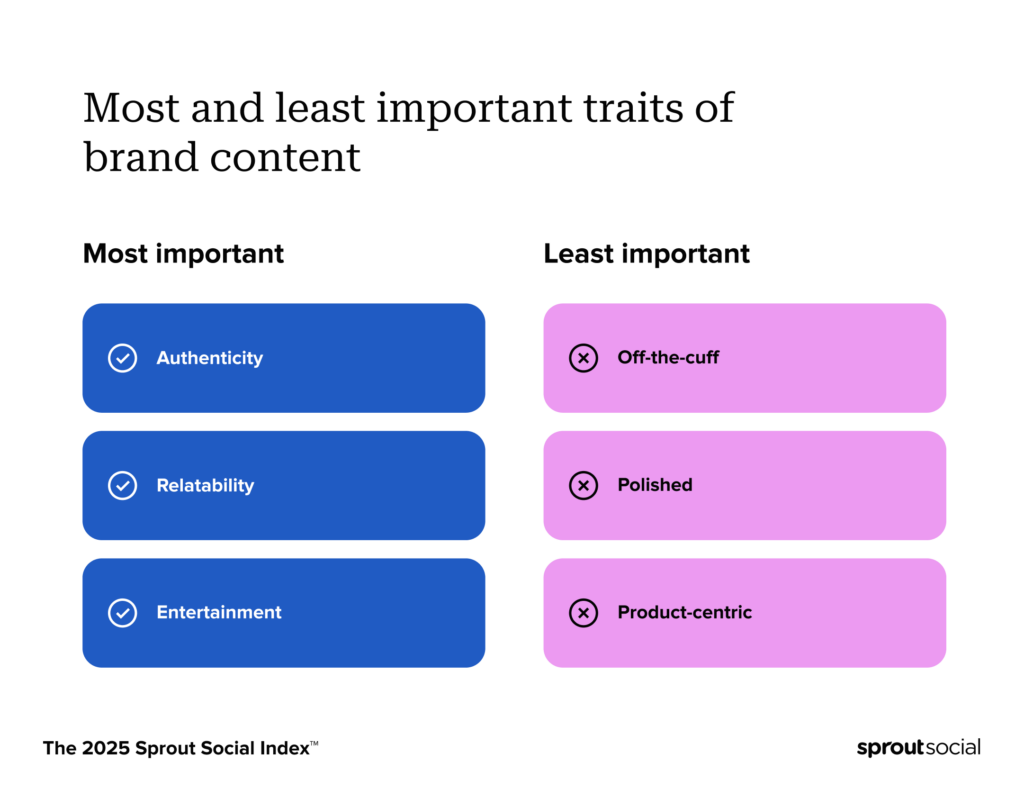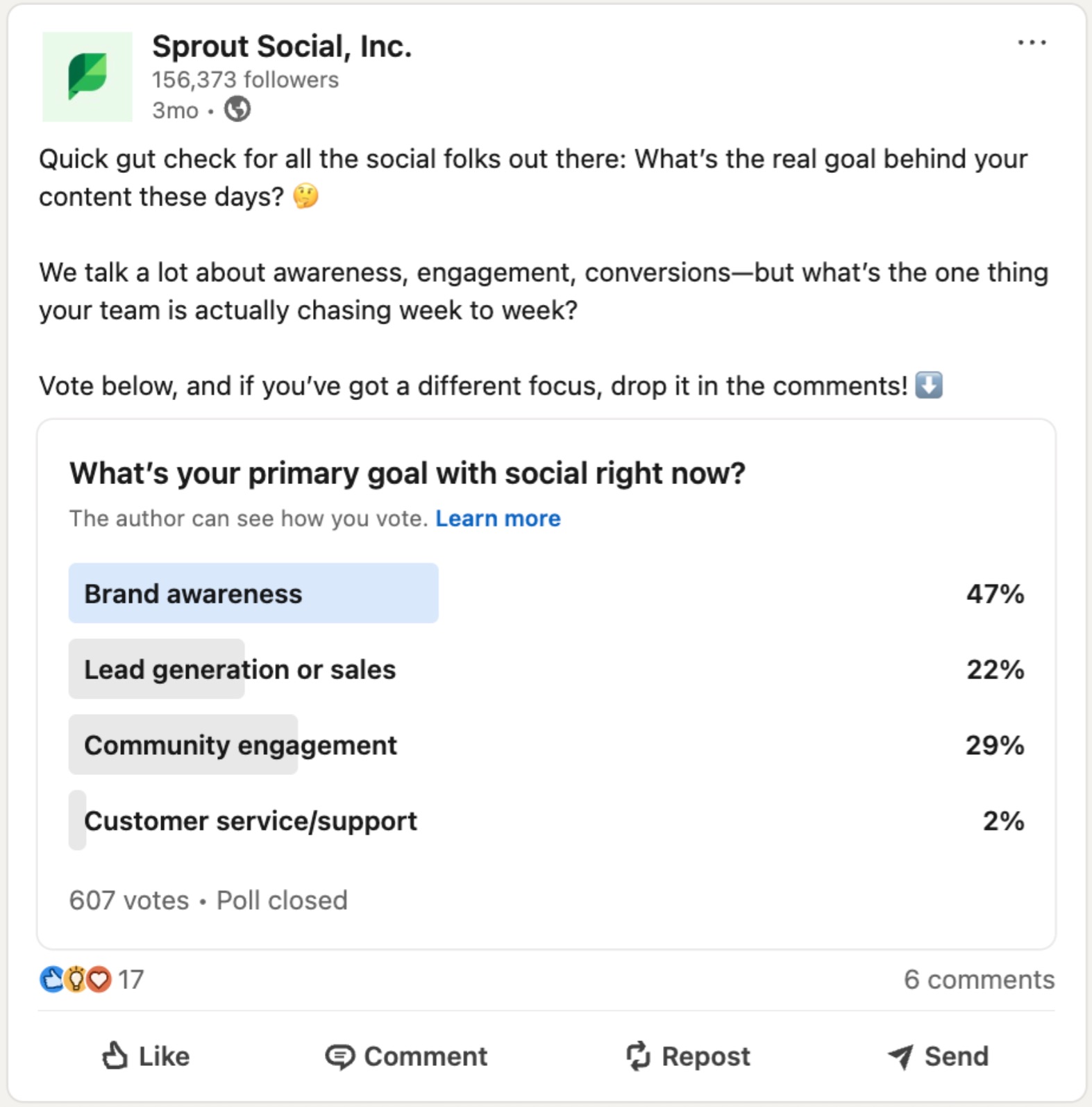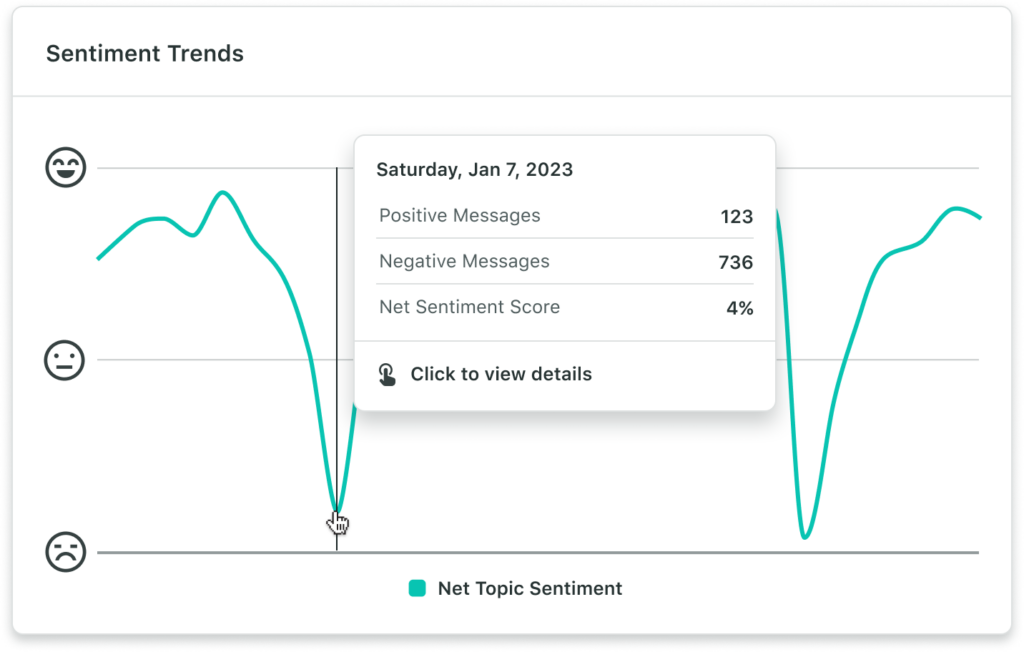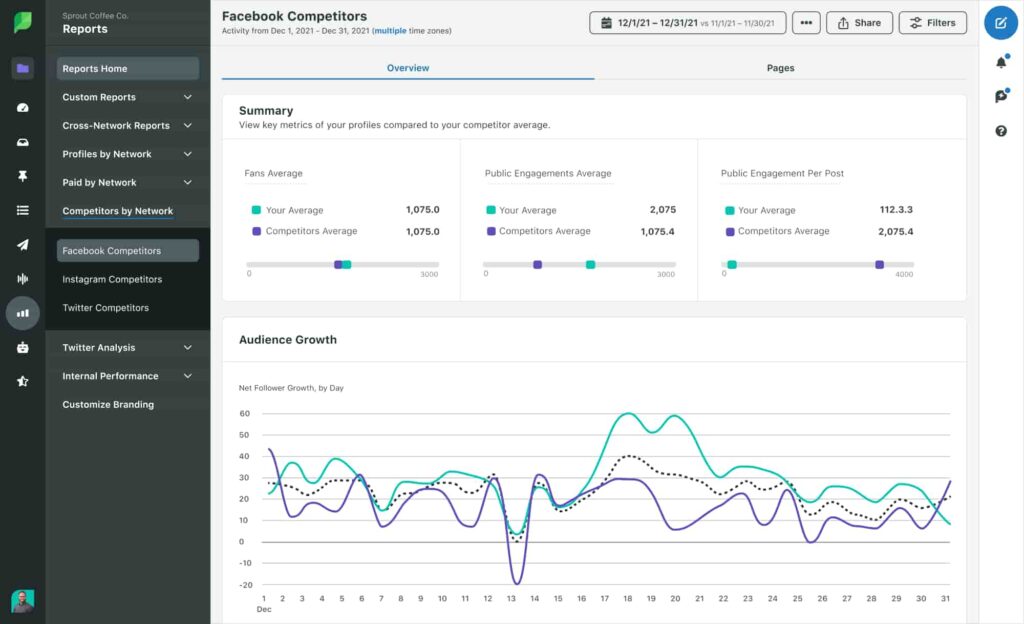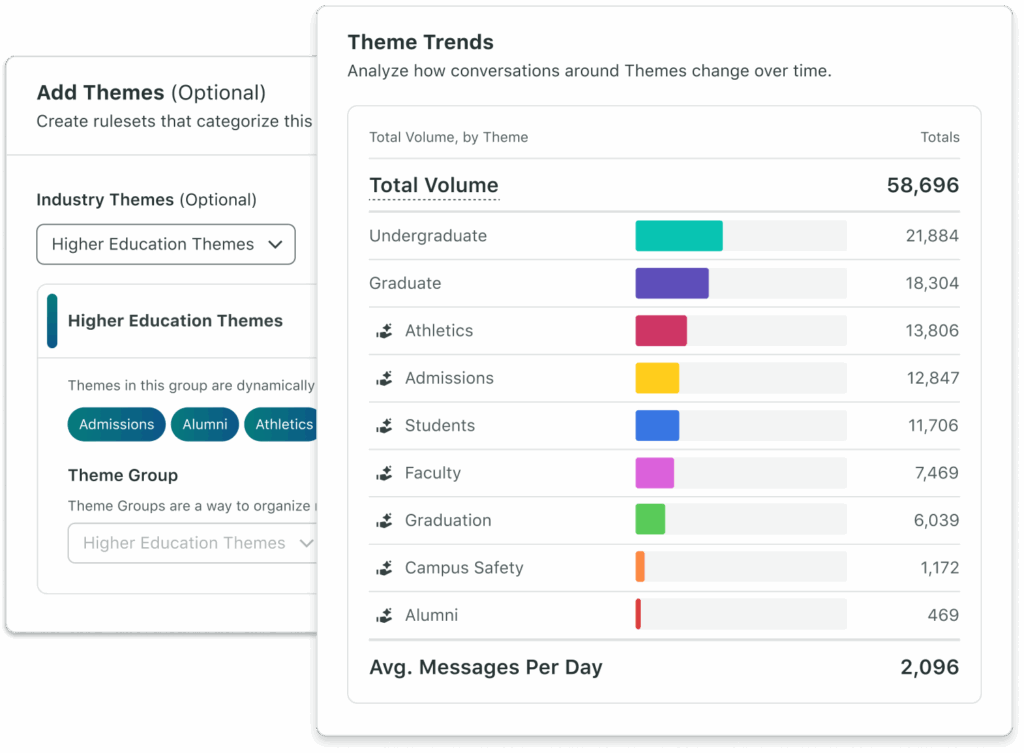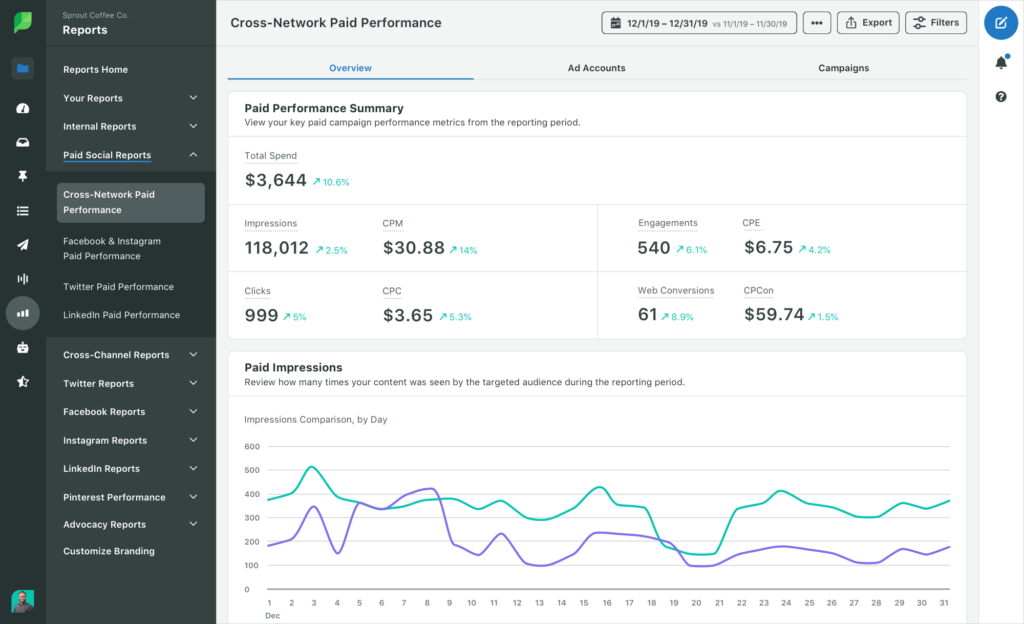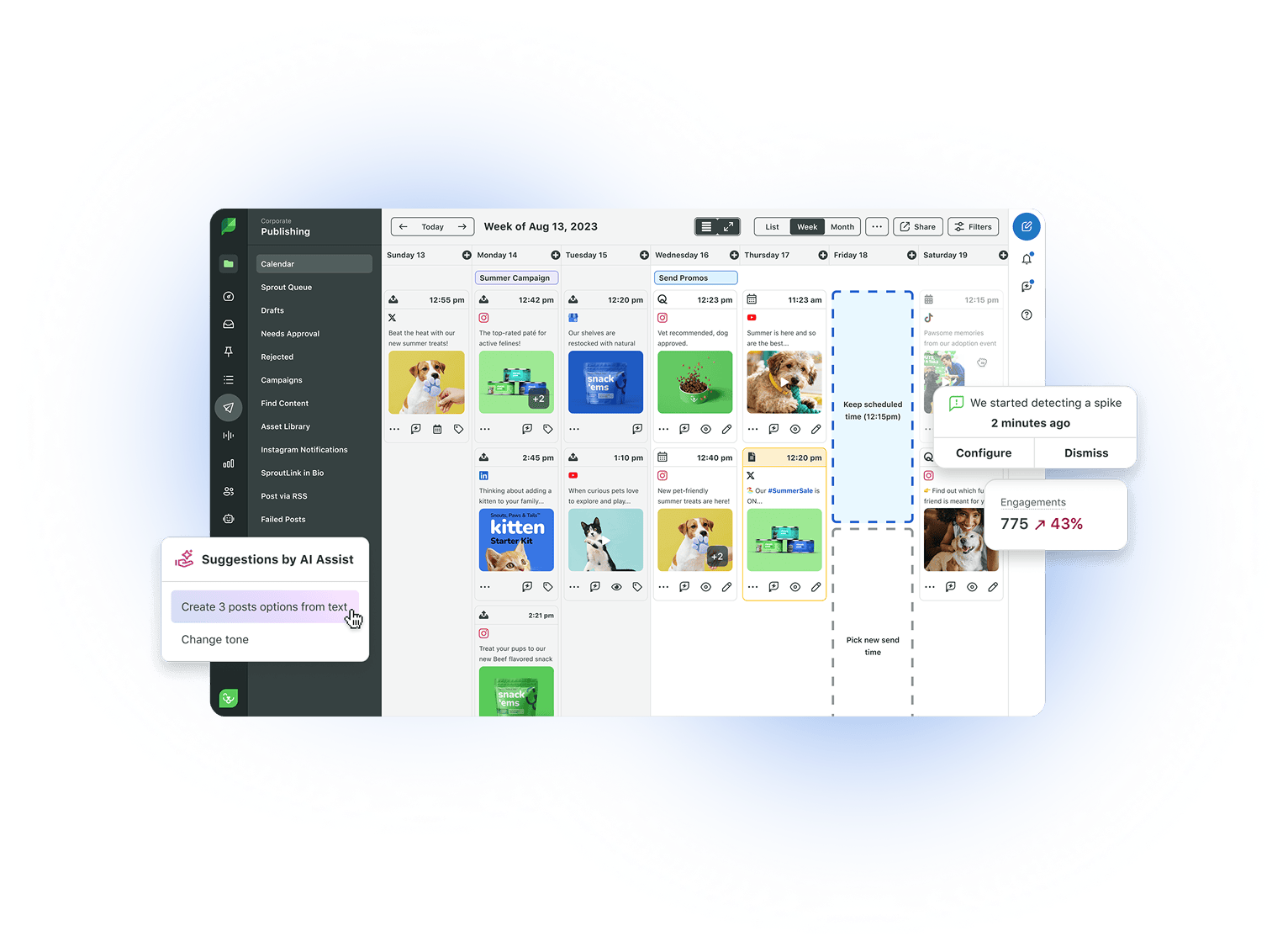How to Use Social Data Like a Pro: 40 Strategies for Smarter Marketing
High impact social data can create company-wide value—and marketing leaders know it.
According to Sprout Social’s 2025 Impact of Social Media Marketing Report, digital marketing teams are most likely to use social data to inform their decisions. But leaders say they want teams like customer experience and success, customer care and support and business development to use social insights to drive their decisions, too.
But turning that aspiration into impact takes more than strong reporting—it takes a clear, scalable approach to sharing social insights across teams. From informing product roadmaps to driving revenue, social data can influence big decisions.
To help you get there, we’ve rounded up 40 high-impact ways to use social data—pulled from proven strategies and forward-thinking social teams.
Understand your audience
1. Conduct a social media audit
Before you can truly understand your audience, you need to understand your own performance. A social media audit helps you establish a baseline, so you can identify what’s working, what’s not and where the biggest opportunities lie.
Review your engagement and publishing metrics, audience demographics (if available), referral traffic, content mix and platform performance. Look for patterns in how your audience interacts with your content and how that’s evolved over time.
Need help getting started? Download our free social media audit template.
2. Track your follower growth
Follower growth isn’t the sole indicator of success, but tracking how and when your audience grows can offer valuable context. Instead of focusing on total followers, zero in on growth rate and timing—especially during campaigns, product launches or high-visibility moments.
Use data visualization tools to surface spikes in interest and understand which tactics are driving discovery. Over time, this helps you refine what attracts new followers and replicate those results more consistently.
3. Tune into consumer trends with social listening
As platforms limit access to traditional demographic data, understanding your audience now hinges on what they care about—not just who they are. That’s where social listening comes in.

With a listening tool like Sprout Social, you can track trending topics, hashtags, keywords and brand mentions across networks to understand what’s capturing your audience’s attention in real time. This kind of insight helps you align your content with the questions they’re asking, the influencers they trust and the cultural moments they’re engaging with.
4. Evaluate where your audience is spending their time on social and why
Each social platform serves a different purpose for your audience. Use your engagement and performance data to learn where your audience is most active, and just as importantly, what they’re looking for on each channel.
For example, your audience may seek inspiration on Instagram, use LinkedIn for thought leadership and turn to TikTok for quick tips. When you understand the why behind their platform behavior, you can tailor your content more effectively—and allocate resources where they’ll make the biggest impact.
Age can also play a role here. Sprout’s 2024 Social Media Content Strategy Report can help you understand which networks are most relevant across generational cohorts, so you can balance behavioral insights with audience preferences in your strategy.

Download the 2024 Social Media Content Strategy Report
5. Cater to your audience’s interests
Top-performing posts are packed with clues about what your audience wants. Use post-level insights and trend analysis to spot content patterns that resonate, whether that’s how-to videos, behind-the-scenes stories or industry hot takes.

Let this data guide your strategy. If product how-tos consistently earn the most clicks or comments, that’s a signal to scale up that content type. When you focus on what your audience is showing interest in, you naturally improve engagement, relevance and reach.
Look beyond your owned dataSocial platforms are treasure troves of audience insights, and many share them openly. Tap into resources from networks like TikTok, Pinterest, Instagram and YouTube to uncover broader consumer trends and industry benchmarks.
Use this data to supplement your own analytics and refine your strategy. Paired with what you’re learning from your owned channels and social listening, these platform-specific insights give you a 360-degree view of your audience.
Expand your influence to other departments
22. Show how social drives site growth
Pair native social metrics like reach and impressions with website analytics to demonstrate how your content attracts new users. Whether you’re using GA4, Bitly or a CRM integration, tracking social-driven traffic helps you quantify awareness, acquisition and engagement—and clearly show marketing leadership the role social plays in growing your audience.
22. Bring customer feedback to product and CX teams
Social is often where customers first share their opinions—good, bad or brilliant. Use those insights to help product and CX teams stay connected to real-time customer needs.
With tagging in Sprout’s Smart Inbox, you can track the volume of specific types of feedback. For example, if you’re seeing repeated requests for a discontinued product, tagging those messages helps quantify demand. That way, you can advocate for changes backed by data rather than anecdotes.
23. Support sales and promotional campaigns with social insights
Social isn’t just for discovery. It’s where buying decisions are made. In fact, consumers say they search for new products and services on social media when they need to make a purchase within the next month, ASAP or in the next 3–6 months.

That level of intent makes social commerce a key revenue driver. Share performance data on shoppable content—like product tags, storefront traffic or in-app conversions—to highlight how social provides a direct path to purchase. These insights help your sales and ecommerce teams understand what drives action, not just awareness.
24. Help sales teams prioritize the right platforms
Not all social channels drive the same results. And your sales team shouldn’t treat them like they do. Use UTM tracking and referral data to identify where your audience is most engaged and where conversions are actually happening.
These insights can help your sales team focus their social selling efforts on the platforms that matter most, whether that’s LinkedIn, Instagram, TikTok or somewhere else entirely. It’s a simple way to align efforts, reduce wasted time and drive more meaningful buyer interactions.
25. Use social sentiment to guide accountability practices
When your brand makes public commitments—whether around DEI, sustainability or social impact—people turn to social to see if you’re walking the talk. According to our Q2 2025 Pulse Survey, the biggest group of social media users (41%) said they’re most likely to call a brand out for doing something unethical than for any other reason.
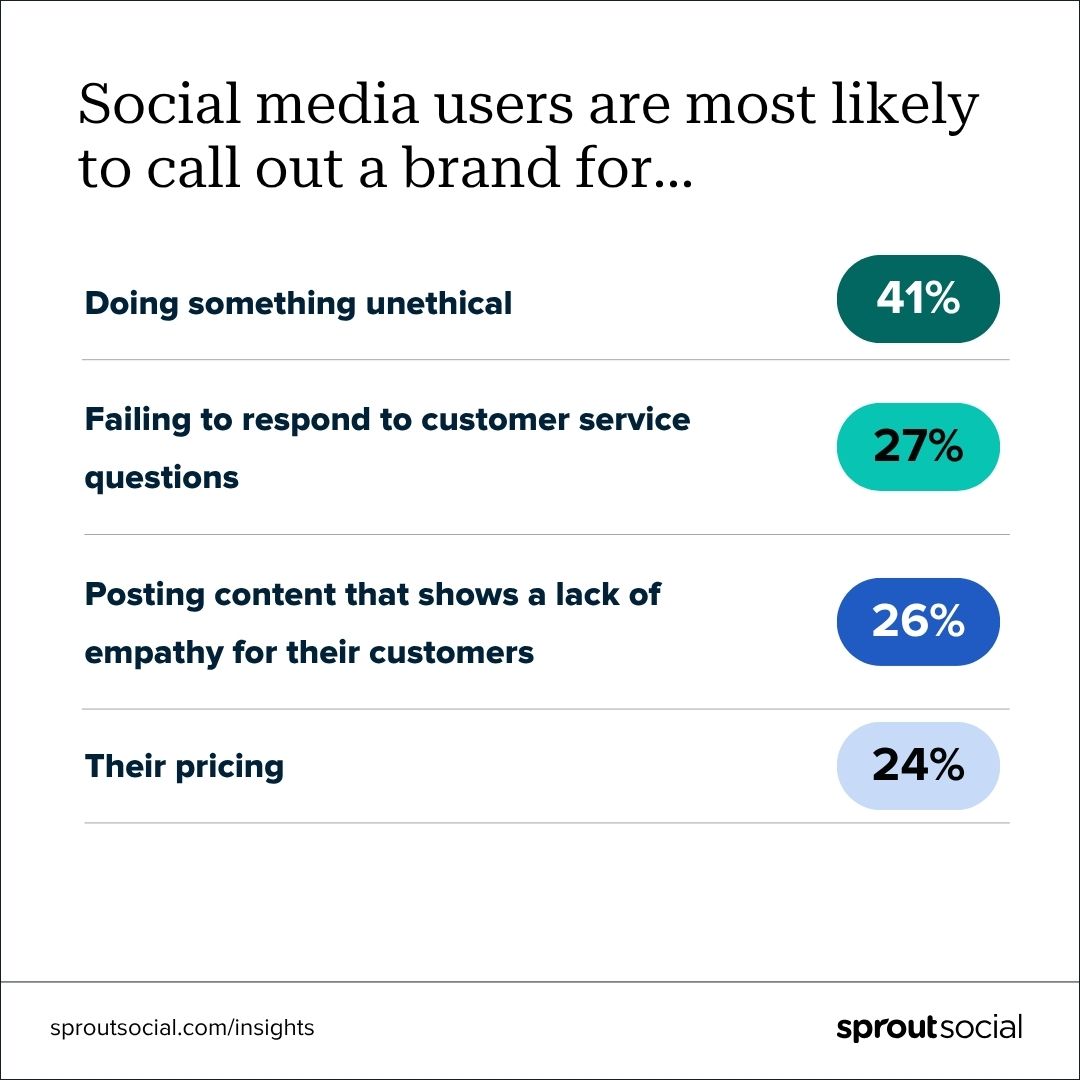
Monitor inbound messages, comments and sentiment to understand how your audience is responding. Use that data to track progress over time, report on perception and advocate for continued transparency. Social gives you a real-time pulse on whether your values are landing—and where you may need to communicate more clearly or take further action.
26. Extend your reach with employee advocacy
Your colleagues can be one of your brand’s strongest distribution channels. With a well-run employee advocacy program, you can empower teams to amplify content, engage their networks and contribute to meaningful brand reach—especially in markets or circles your brand account might not organically reach.
Sprout’s advocacy tool makes it easy to share curated content, track performance by network or individual and report back on the real impact of employee amplification.
27. Inform design and creative decisions with data
Creative teams do their best work when insights guide the process. By bringing performance data to designers, you can help them understand what’s resonating across platforms and tailor content to meet both audience expectations and brand goals.
Whether it’s format, tone or visual identity, these insights ensure your creative aligns with how and where people are engaging with your brand.
28. Use social insights to influence the full marketing mix
Social performance data can benefit your entire marketing org. Just ask the team at River Island.
They use Sprout’s Tag Report to uncover which creative assets resonate most—and those insights now shape email, website and influencer strategies.
“The use of influencer or UGC imagery across our email marketing and site has increased. The images and the data that informed that decision come directly from social. Because we’ve been able to show how content performs, dig up key insights and prove real social value, now, for the first time, we’re starting to work as a full 360 platform.”
– Chloe Bebbington, Social Media Marketing Manager, River Island
Learn more about how River Island uses Sprout to optimize their content and social strategies.
Strengthen brand trust through data-driven care and reputation management
29. Monitor and manage brand reviews
Online reviews are a rich source of qualitative insight. Whether posted on social platforms or third-party sites, they reveal what’s resonating—or falling short—for your customers. Social teams are often the first to spot trends across reviews and can use that feedback to inform other teams.
By tagging review themes in Sprout or setting up Listening Topics to track emerging sentiment, you can identify patterns worth elevating to product, operations or customer experience teams. This ensures the voice of the customer drives meaningful change across the business.
30. Monitor the impact of internal Glassdoor review campaigns
Many organizations run internal initiatives encouraging employees to leave reviews on Glassdoor, especially after key milestones like onboarding, anniversaries or company events. These efforts are intended to boost visibility and improve ratings, but their effectiveness can be difficult to measure without the right tools.
Sprout’s Glassdoor integration enables marketing and HR teams to monitor changes in review volume and sentiment following those campaigns. By aligning around a shared view of the data, teams can assess what’s working, refine future outreach and ultimately strengthen the company’s employer brand presence.
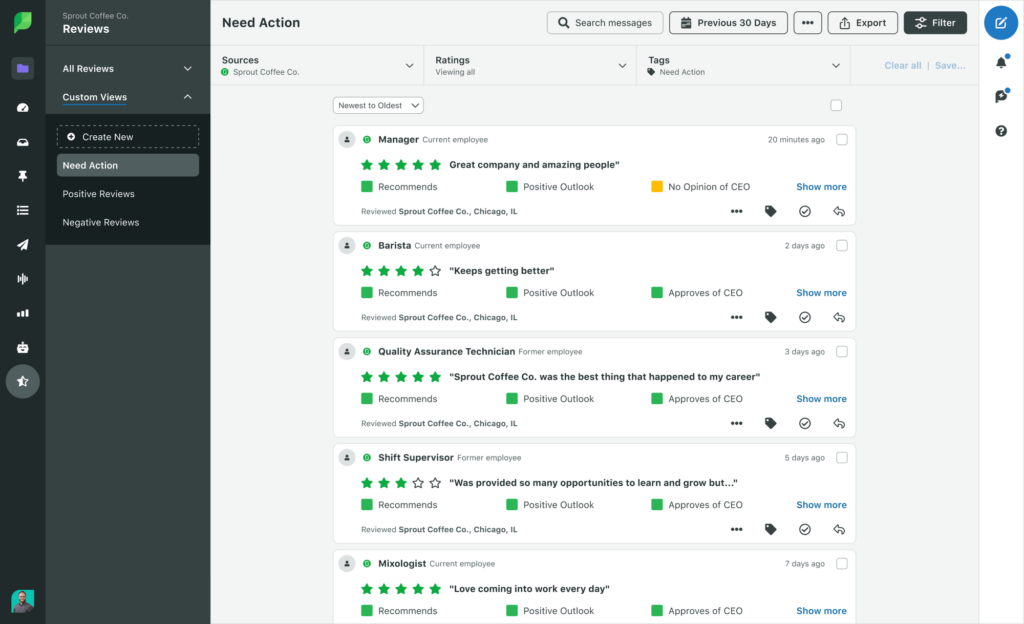
31. Apply social listening techniques to your employer brand
You’re already using social data to track trends in consumer sentiment. Why not do the same for employee sentiment?
With Sprout Social, you can apply Tags to employee reviews submitted through Glassdoor, then use the Tag Report to analyze patterns, track internal culture themes and identify areas for improvement. These insights can help you evolve your employer branding strategy with the same rigor you apply to external campaigns.
32. Use social data to proactively address FAQs
Customer questions on social are more than just one-off interactions—they’re signals. By tagging inbound messages in Sprout, your team can track recurring themes, identify which questions are trending and determine where confusion or demand is building.
If you notice certain Tags ballooning, use that insight to craft proactive responses, update help center content or build ready-to-go replies for your social team (which can be stored as text resources in Sprout’s Asset Manager). The result? A smarter, more responsive customer care strategy that evolves in real time with your audience’s needs.
33. Measure and improve the efficiency of your social care team
Responsiveness can make or break brand loyalty. Findings from the Sprout Social Index™ show that 73% of social users agree if a brand doesn’t respond on social, they’ll buy from a competitor.
With Social Customer Care by Sprout Social, you can go beyond anecdotal feedback. Use metrics like average first reply time, response rate and resolution time to set internal benchmarks, track team performance and make informed staffing decisions.
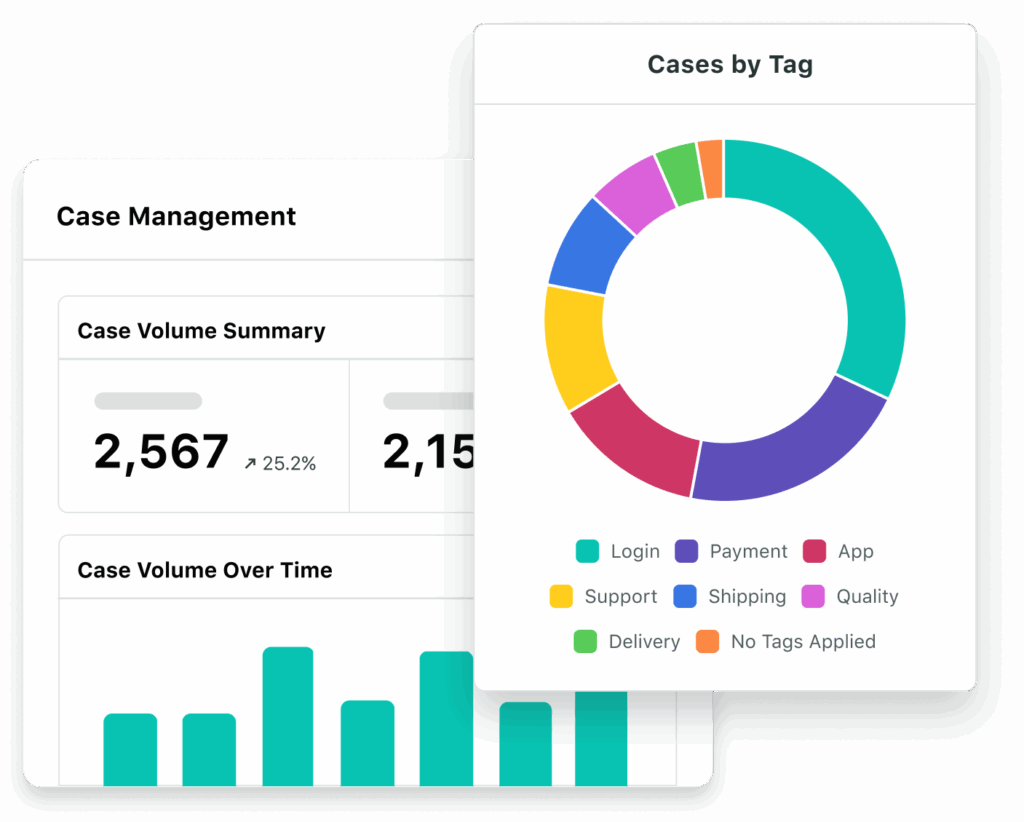
Sprout’s Case Management Report and Case Team Activity Report surface actionable insights into care team productivity—empowering you to optimize workflows, coach individual agents and exceed rising customer expectations.
